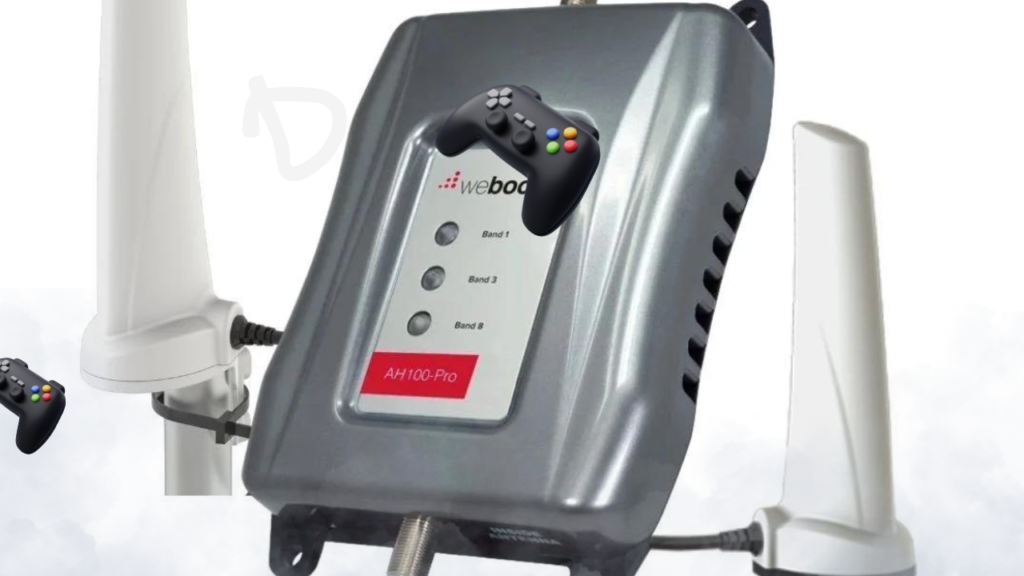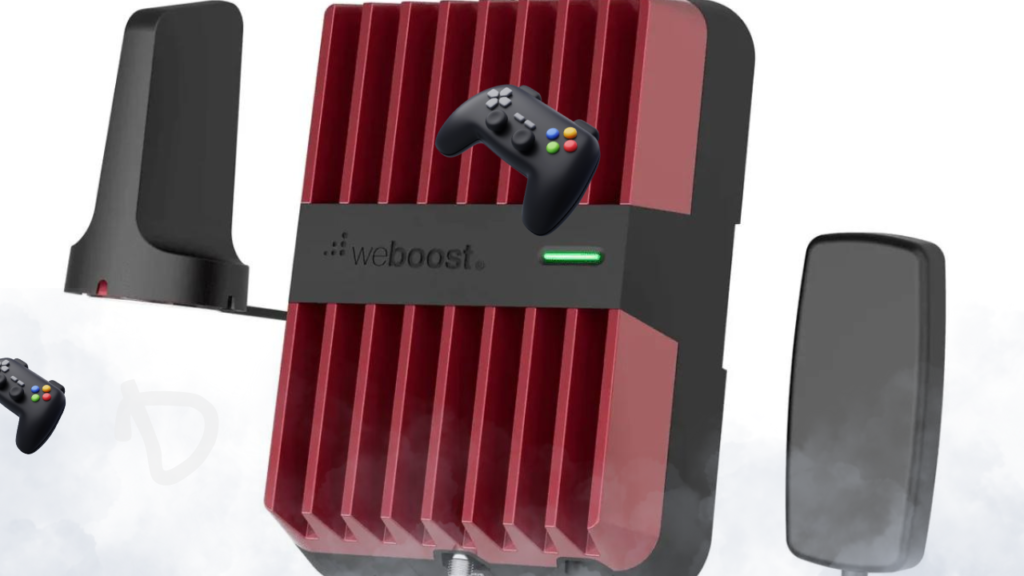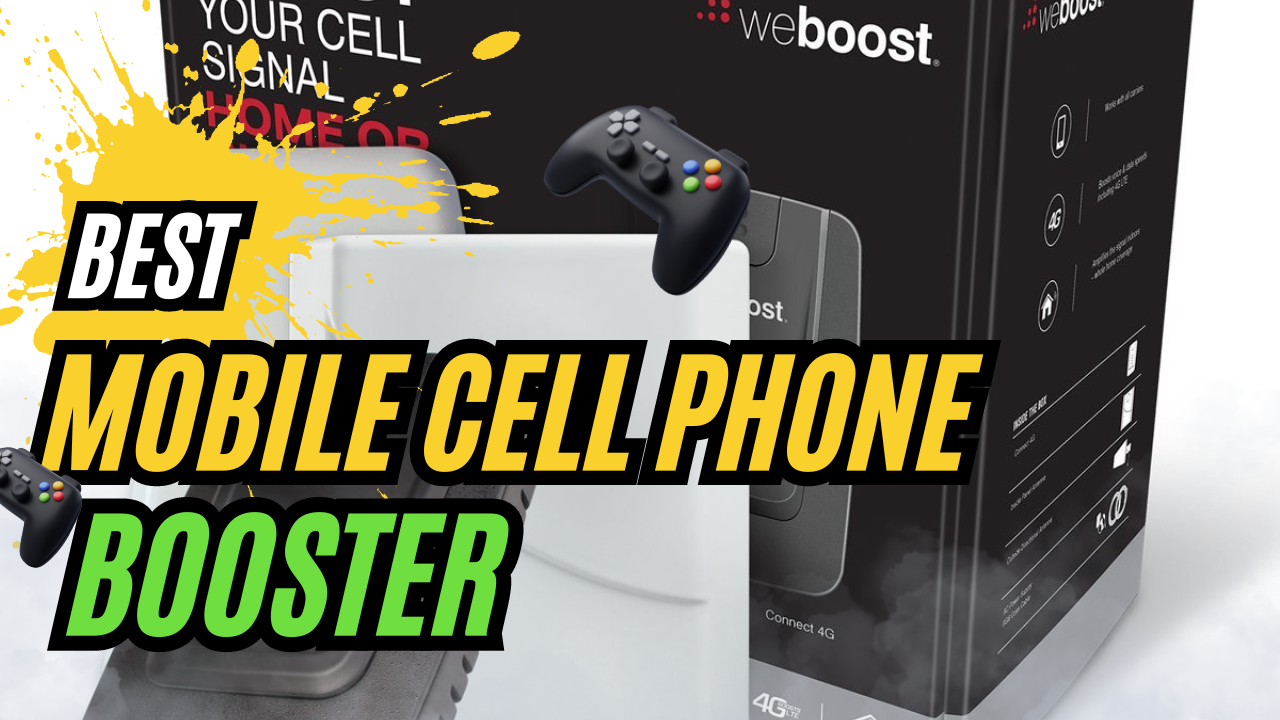In today’s hyper-connected world, a reliable cellular signal is no longer a luxury—it’s a necessity. Whether you’re working remotely, staying in touch with loved ones, or simply browsing the internet, a strong cell signal is crucial. But what happens when you’re stuck in a dead zone or dealing with frustratingly weak reception? That’s where mobile cell phone boosters come in. Let’s dive into the world of these handy devices and figure out which one might be the best for your needs.
Cell Phone Boosters
Before we jump into the top contenders, let’s break down what a cell phone booster actually is and how it works.
What Is a Cell Phone Booster?
A cell phone booster, also known as a signal booster or cellular repeater, is a device designed to improve your cell phone’s reception. It works by amplifying weak cellular signals, allowing you to make calls, send texts, and use data in areas where you’d otherwise struggle to get a connection.
How Do Cell Phone Boosters Work?
The process is pretty straightforward:
- An outside antenna captures the weak cell signal
- The signal is sent to the booster unit, which amplifies it
- The amplified signal is broadcast inside your home, office, or vehicle by an inside antenna
This boosted signal provides better coverage and faster data speeds for all cellular devices within range.
When Choosing a Cell Phone Booster
Before we dive into specific recommendations, let’s look at the key factors you should consider when shopping for a cell phone booster:
- Coverage area: How much space do you need to cover? A small apartment needs a different solution than a large house or office building.
- Carrier compatibility: Some boosters work with all major carriers, while others are carrier-specific.
- Frequency bands: Different carriers use different frequency bands. Make sure the booster you choose supports the bands used by your carrier.
- Installation complexity: Some boosters are plug-and-play, while others require professional installation.
- Portability: Do you need a solution for your home, your car, or both?
- Budget: Cell phone boosters can range from under $100 to over $1000, depending on their features and capabilities.
- Gain: This refers to how much the booster amplifies the signal. Higher gain isn’t always better—it depends on your specific situation.

Top Contenders for the Best Mobile Cell Phone Booster
Now that we understand what to look for, let’s explore some of the best cell phone boosters on the market.
Best Overall: weBoost Home MultiRoom
Pros:
- Covers up to 5000 sq. ft.
- Works with all major U.S. carriers
- Boosts 3G and 4G LTE signals
Cons:
- Expensive
- Installation can be complex
The weBoost Home MultiRoom is a powerhouse that can cover multiple rooms in a large home or office. It’s compatible with all major U.S. carriers and can significantly improve both voice and data signals.
Best for Vehicles: weBoost Drive Reach
Pros:
- Powerful 50 dB gain
- Works in cars, trucks, and RVs
- Easy to install
Cons:
- Pricey compared to other vehicle boosters
- May not work well in areas with extremely weak signals
If you spend a lot of time on the road, the weBoost Drive Reach is an excellent choice. It’s powerful enough to maintain a strong signal even in rural areas, and it’s compatible with all U.S. carriers.
Best Budget Option: SureCall Flare 3.0
Pros:
- Affordable
- Easy to set up
- Covers up to 3500 sq. ft.
Cons:
- Not as powerful as more expensive options
- May struggle in areas with very weak signals
The SureCall Flare 3.0 offers a great balance of performance and affordability. It’s a good choice for smaller homes or areas with moderate signal issues.
Best for Rural Areas: HiBoost 10K Smart Link
Pros:
- Covers up to 10,000 sq. ft.
- Works well in areas with very weak signals
- App-based setup and monitoring
Cons:
- Expensive
- May require professional installation
If you live in a rural area with consistently poor cell coverage, the HiBoost 10K Smart Link is worth considering. It’s powerful enough to boost even the weakest signals and can cover a large area.
Best Portable Option: SureCall Fusion2Go 3.0
Pros:
- Works in vehicles and can be used indoors
- Easy to set up and move
- Affordable compared to fixed boosters
Cons:
- Limited coverage area
- Not as powerful as dedicated home or vehicle boosters
For those who need a flexible solution, the SureCall Fusion2Go 3.0 is a great choice. It can be used in your car and then easily moved to a small indoor space when needed.

Comparing the Top Contenders
To help you visualize how these boosters stack up against each other, here’s a comparison table:
| Booster Model | Coverage Area | Gain | Carrier Compatibility | Best For | Price Range |
|---|
| weBoost Home MultiRoom | Up to 5000 sq. ft. | 65 dB | All major U.S. carriers | Large homes/offices | $$$$ |
| weBoost Drive Reach | In-vehicle | 50 dB | All major U.S. carriers | Vehicles | $$$ |
| SureCall Flare 3.0 | Up to 3500 sq. ft. | 72 dB | All major U.S. carriers | Small homes/budgets | $$ |
| HiBoost 10K Smart Link | Up to 10,000 sq. ft. | 70 dB | All major U.S. carriers | Rural areas | $$$$ |
| SureCall Fusion2Go 3.0 | In-vehicle/small spaces | 50 dB | All major U.S. carriers | Portability | $$ |
Installation Tips
Once you’ve chosen the best cell phone booster for your needs, proper installation is crucial for optimal performance. Here are some tips:
- Find the strongest outside signal: Use your phone’s signal strength indicator to find the best spot for the outdoor antenna.
- Maximize separation: Keep the indoor and outdoor antennas as far apart as possible to prevent feedback.
- Point directional antennas correctly: If your booster uses a directional antenna, make sure it’s pointed towards the nearest cell tower.
- Secure all connections: Ensure all cables are tightly connected to prevent signal loss.
- Follow manufacturer instructions: Each booster may have specific installation requirements, so always read the manual carefully.
Potential Drawbacks and Limitations
While cell phone boosters can be incredibly helpful, they’re not without their limitations:
- They can’t create a signal: Boosters amplify existing signals, but they can’t create a signal where there isn’t one at all.
- Interference issues: In rare cases, poorly installed boosters can interfere with nearby cell towers.
- Carrier restrictions: Some carriers may not allow the use of certain boosters on their networks.
- Initial cost: Quality boosters can be expensive, although they often pay for themselves in improved productivity and convenience.
The Future of Cell Phone Boosters
As technology evolves, so do cell phone boosters. Here are some trends to watch:
- 5G compatibility: As 5G networks become more widespread, we’ll see more boosters designed to amplify these high-frequency signals.
- Smart boosters: Future boosters may use AI to optimize their performance based on changing signal conditions.
- Integration with smart home systems: We might see boosters that work seamlessly with other smart home devices for improved connectivity throughout the house.
- Smaller, more powerful units: Advancements in technology will likely lead to more compact boosters with improved performance.
Wrapping Up
So, what is the best mobile cell phone booster? The answer, as with many things in life, is: it depends. Your specific needs, location, and budget will all play a role in determining the best booster for you.
If you’re looking for a powerful all-rounder for a large home, the weBoost Home MultiRoom is hard to beat. Road warriors will appreciate the weBoost Drive Reach, while those on a budget might lean towards the SureCall Flare 3.0. Rural dwellers with serious signal issues should consider the HiBoost 10K Smart Link, and if portability is key, the SureCall Fusion2Go 3.0 is a solid choice.









